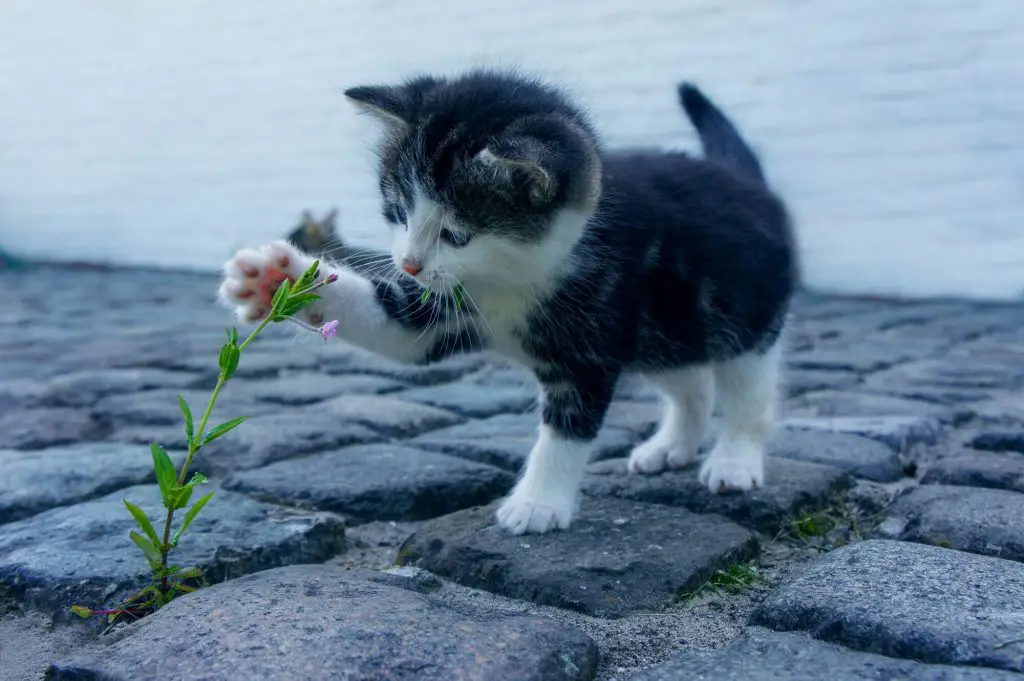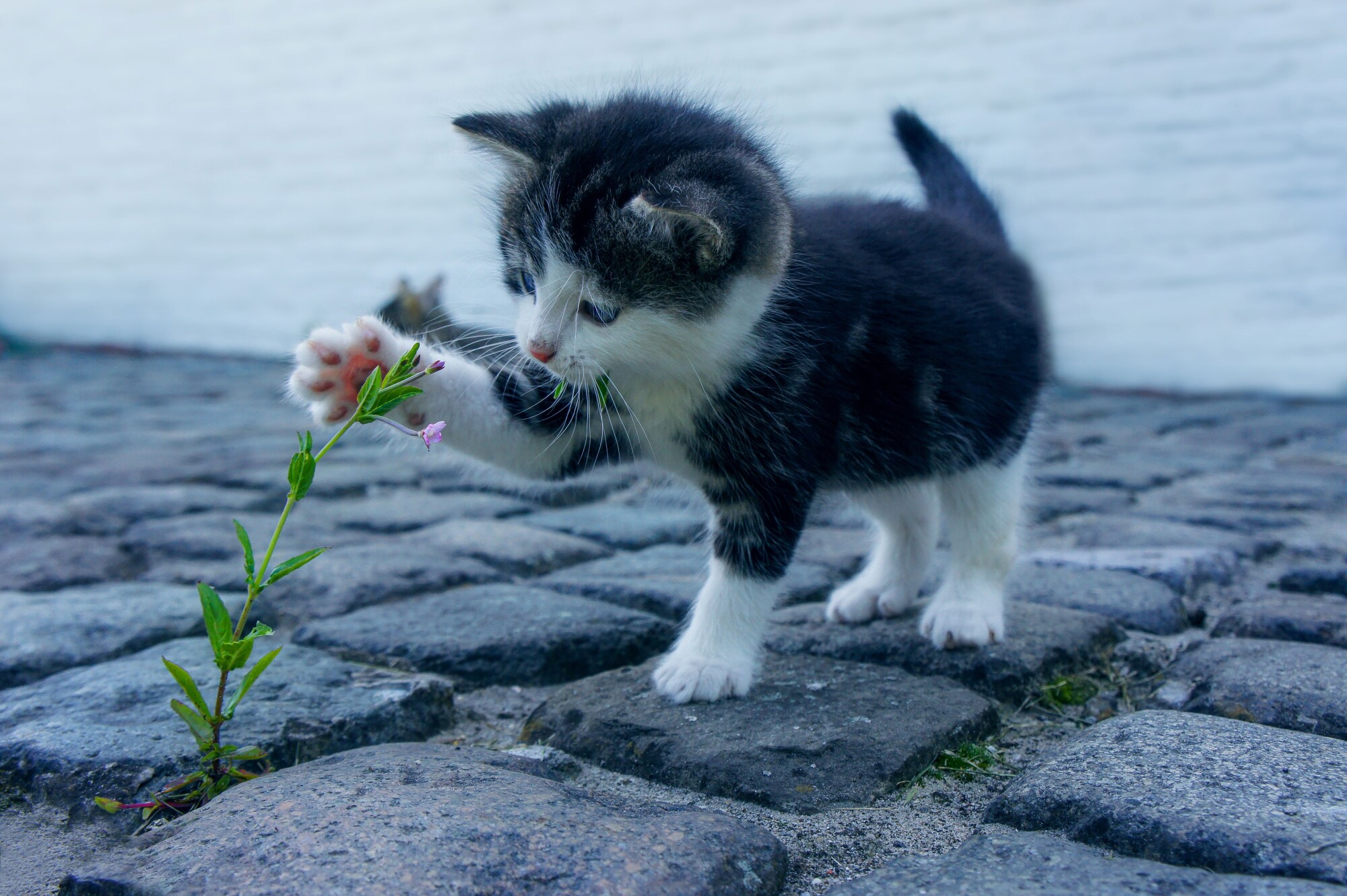Introducing cats is exciting but not a walk in the park. They’re territorial and solitary animals, so they dislike any other presence in their territory. Hence, it’s necessary to be cautious when introducing them to other feline partners.
Of course, when bringing another cat into your home, you expect the resident cat to warm up and welcome the new feline. But do you this might not happen without a proper introduction? The two cats may not get along and can engage in fights that turn out to be hostile and life-threatening.
However, your cats can feel comfortable and start getting along within a short time with proper introductions. Don’t hurry to introduce your cats; let them take their time to familiarize themselves and be comfortable around one another.
Have you gotten adequate satisfaction from your resident cat that you want to bring a new one home? If yes, keep reading to learn more about warning signs when introducing cats.

Contents
- 1 Hissing
- 2 Rumbling
- 3 Growling and Snarling
- 4 Flattening Their Ears
- 5 Puffing Up Fur and Dilated Pupils
- 6 Staring at Each Other
- 7 Attacking and Biting
- 8 Hiding From Each Other
- 9 Cats Stop Eating and Are Screaming
- 10 Resident Cat Stops Using the Litterbox
- 11 Cats Refusing to Coexist Together
- 12 New Cat Don’t Have Adequate Exploring Time
- 13 Twitching Tails
- 14 These Are Top 13 Warning Signs When Introducing Cats
- 15 Learn More
- 16 What do Cats like to eat for breakfast?
Hissing
After introducing a new cat to the resident, one under the same roof, one or both can start hissing immediately. The hissing sound is similar to a snake hiss or a sound of air release from the vehicle’s tires. Cats make this sound to express their disgust, discomfort, and fear of being close to one another.
Also, a cat hisses to warn off other cats. So if any of your cats start hissing after introducing them to each other, they might not get along with one another. Also, it can signal your feline friends are fearful about the introduction experience.
Hissing is usual when cats are introduced to one another. However, it shouldn’t continue for a long time. After some time, the two cats should develop a strong bond and start getting along.
Rumbling
Cats are territorial animals, so they dislike when other cats are introduced in their territories. For this reason, they start rumbling to express anger and fear of losing their territories once the introduction occurs. The rumbling sound can also act as an indication of one cat warning the other.
If your resident cat rumbles immediately after seeing the new one, it means they aren’t welcoming them. They’re trying to drive intruders away from their territory by showing aggression.
Growling and Snarling
After introducing a new cat, your resident one can start growing as a warning sign. Just like hissing and rumbling, growling signals aggression and hostility. Also, it can indicate high levels of unhappiness and fear.
As a cat lover, know it’s natural for a resident cat to growl when the new cat comes close to it. It growls to show that it wants the new cat out of its territory.
Some resident cats snarl instead of growling when introduced to new cats. Snarling is much louder and higher pitched than the growling sound.
If you already own a feline partner, you know they snarl when they’re threatened. That means, if your resident cat snarls after introducing a new one, they’re uncomfortable being in proximity with a newcomer.
Flattening Their Ears
Cats flatten press back and down their ears when they feel nervous, anxious, and threatened. So, they’re likely to behave that way by introducing a new feline partner.
If a cat pushes its ears flat against its head, it doesn’t like the introduction of the new cat. They’re angry and view the other cat as an intruder or threat.
Keep them away from one another as the cats’ owners if you realize they’re flattening their years after the introduction.
Puffing Up Fur and Dilated Pupils
After bringing a new cat into your home, the resident can puff their body or fur. In most cases, cats behave this way when defending themselves from a threat.
They try to make themselves appear larger and dominate others by puffing their bodies. Mostly, the insecure cat does this to scare off the other one.
Besides puffing up fur, your cats can dilate their pupils during the first encounter with other cats. Dilation of pupils is a display of your cat’s fear or depression.
That means your cats can express their worries this way if they’re fearful about the introduction. As a cat owner, don’t ignore this sign as it shows your resident cat isn’t ready to get along with the newcomer.
Staring at Each Other
It’s normal for cats to stare at each other for a while after the introduction. However, if the resident cat stares at the newcomer for a long time, it might be developing aggression. Soon, it might attack the new cat to chase it away from its territory.
If such a situation occurs, don’t hesitate to separate the two cats by locking them in different rooms. Otherwise, they can fight and end up with severe injuries resulting in deaths.
Attacking and Biting
As cats are solitary animals, they hardly like intruders in their personal space. So they can be too hostile and aggressive in their first encounter with other cats. To express their unhappiness during such moments, they can attack or bite the new cats.
This indicates that your cats can take much time before getting along with each other. As the cats’ owner, you’ll be stressed because your intervention will be needed to ensure they don’t fight and injure themselves.
If you realize your cats are attacking and biting each other, separate them immediately. You can do so by putting them in different rooms or taking one of them away from your home.
Hiding From Each Other
It’s prevalent for cats to hide from each other during the introduction. In most cases, the less dominant cat hides from the dominant one. It can hide under the bed or sofa to avoid face-to-face interaction with the stronger one.
Since the less aggressive cat is scared of the other cat, they can also run away. While the fearless one can keep chasing it away from its area.
If this continues, you might end up losing your cat. So, it’s good to separate them once you discover they aren’t or are taking too long to get along.
Cats Stop Eating and Are Screaming
If you introduce a new cat and feed it with the existing one, the resident cat will become fearful and stop eating. At times, they can fight over the food, and none enjoy eating. If this happens, stop feeding them from the same plate.
Upset cats can also make low whining and mewling voices. These noises can escalate into screaming and wailing if nothing is done to cool them down.
Separate your cats quickly if this happens because it’s a sign they’ve reached their limit. This will enhance your cats’ happiness and satisfaction and lower everybody’s stress levels.
Resident Cat Stops Using the Litterbox
After introducing your new cat to the resident one in the same house, the cat can stop using the litter box. This can only happen if it’s not welcoming and you feel terrified. These cats can take a long time before creating a bond between themselves and enjoying each other’s company.
Also, both cats require proper introduction to get along and live peacefully under the same roof. So, you can separate them for some time and reintroduce them to each other appropriately.
Cats Refusing to Coexist Together
Regardless of your efforts to create a bond between your cats, they can hesitate to coexist together. They can become more hostile day by day and don’t withstand each other’s presence. Also, they can be reluctant to play, eat and get along with one another.
This can be an indication your cats need a break. It would be best if we separate and reintroduce them in the right manner. If unsure about the proper way of introducing cats, seek help from a vet or an animal trainer.
If, after doing all this, your cats don’t get along, you can gift one of them to your friend or sell it.
New Cat Don’t Have Adequate Exploring Time
Usually, after introducing a new cat into your home, it should explore your house to familiarize itself with it. However, if you realize it stays at a specific corner or under your furniture, it can be uncomfortable or fearful. Being introduced to your resident cat can be an intimidating experience for a newcomer.
In that case, your new cat may feel unwanted and uncomfortable exploring the new environment. The situation can go frenzy if the resident cat shows dominance over the new cat. It is wise to separate them if the case doesn’t get any better.
Twitching Tails
If your cats start twitching tails after the introduction, that can signal irritation and aggression. This is one of the most common behaviors of cats that fight frequently.
If your cats keep twitching tails, just know trouble is brewing. Separate them before they attack and bite one another to protect them from sustaining severe injuries.
These Are Top 13 Warning Signs When Introducing Cats
Cats are individualistic animals and more often prefer flying solo. So if you don’t introduce them properly to each other, fur will fly. To prevent your cats from fighting and injuring one another, look out for early red flags after the introduction.
Above are the common warning signs when introducing cats.
Do you want to learn how to introduce cats? At Animal Fate, we can help you out. We offer quality content, from guides to interesting facts about pets.




